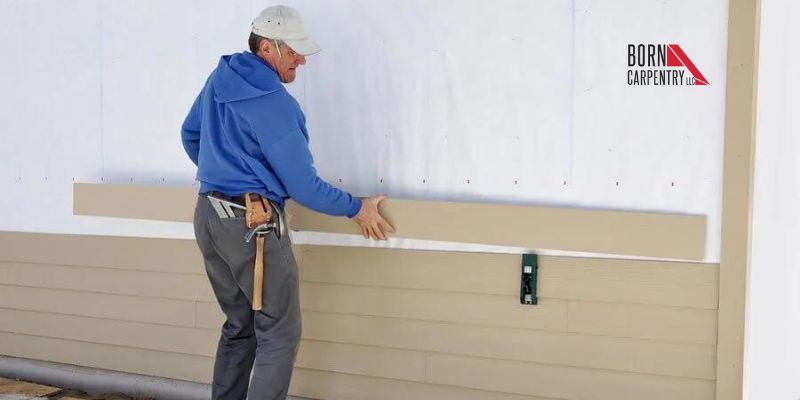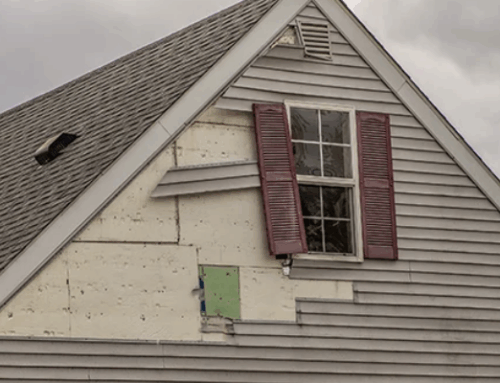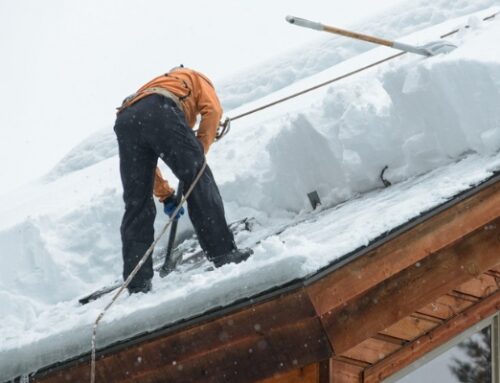Many homeowners often overlook siding maintenance. Overlooking regular care can result in expensive repairs, especially during winter when the wind, snow, and water can cause damage. Taking care of your home’s siding ensures cost-effective energy bills in addition to many other advantages.
Different Types of Siding Materials and How to Maintain Them
Siding maintenance is a necessity in the harsh weather conditions of the winter season. The steps taken will ensure its optimal functionality during the cold season. Various siding materials exist, each requiring specific care to varying degrees.
Here are popular siding types and how to take care of them:
Vinyl siding
Vinyl siding is known for being durable. It also offers a wide range of color and texture options to choose from. Its lightweight and versatile nature allows for its installation over existing materials.
To maintain vinyl siding, regular cleaning is essential to remove accumulated dust or dirt. A simple combination of household cleaning solutions and a garden hose can be used for this task.
It is important to avoid putting paint over vinyl siding to maintain manufacturer warranties. In the event of damage, immediately repair or replace the affected area. When installing a new siding strip, go for moderate weather conditions to ensure a successful installation.
Wood siding
Wood siding is a sophisticated type of siding that gives an appealing and classic look to your home. It is available in various types and grades and is the top choice for upscale renovation projects.
Due to its malleability, wood siding allows for easy shaping and installation. Despite this, you must know that wood tends to be costlier than alternative siding materials. However, the investment in wood siding is worth it due to its aesthetic appeal.
Nevertheless, the drawback of wood siding is its susceptibility to rot, especially during winter. To maintain its condition and longevity, regular staining or painting is recommended because it will help protect it against premature deterioration.
Fiber cement siding

If you are considering a siding option for your home, then you have found a great option in fiber cement siding. Fiber cement siding is popular for its exceptional durability and resilience to diverse weather conditions and temperature fluctuations.
It is a type of siding that generally demands minimal maintenance. Nevertheless, it does warrant periodic attention, as it is not entirely immune to environmental elements.
Proper care for your fiber cement siding involves regular painting and checking of the caulking around your house. Identifying and sealing any gaps in the caulking also helps in preserving your home’s insulation.
General Maintenance Tips to Protect Your Sidings During Winter
You must always take care of your home’s exterior. This is imperative if you want to ensure that your home’s siding remains in good condition for many years. To make it easier for you regardless of the type of siding you have, here are tips for caring for them during the winter:
1. Regular inspection
Your home’s exterior often faces elements that can cause damage. These elements can subject your siding to gradual wear and tear. Following the impact of the summer season, your siding might show signs of degradation, including fractures, irregularities, mold, rot, or perforations.
Identifying these signs ahead of winter is essential in terms of both finances and peace of mind. Autumn, with its milder weather, provides an ideal opportunity for a thorough inspection of your home’s siding. During this examination, you must carefully assess each siding panel, searching for any indications of missing, impaired, or loosened components.
2. Replace damaged siding
Another important maintenance advice that you should not overlook involves the replacement of damaged siding. Sometimes, the extent of deterioration is such that repairs become impractical, making a complete replacement necessary. If you are not sure about the right course of action, you should seek the help of a professional.
A trusted expert can conduct a thorough assessment to determine whether your siding requires repair or replacement. Choosing to replace your siding enhances the aesthetic appeal of your home. It also helps to improve its defense against the elements in addition to contributing to the efficient management of your home’s energy consumption.
3. Perform all necessary repairs

Immediate action is crucial when you notice damage to your home’s siding. Failing to address these issues on time, particularly during the winter season, can lead to rapid deterioration. Therefore, you must avoid attempting DIY repair methods, as they may make the problem worse.
Instead, engaging a local siding specialist is the recommended approach for conducting the repairs. By addressing concerns when they are still in their early stages, you can effectively extend the service life and performance of your siding material. These repairs are sure to protect your home and enhance its energy efficiency.
4. Clean your siding
Your home’s siding is an integral part of its exterior, and it tends to accumulate debris. Over time, these particles can trap moisture and lead to structural damage. To stop these effects, you must carry out regular maintenance. Gentle scrubbing and rinsing to remove dirt or mildew is recommended.
Additionally, pay attention to the small crevices where spider webs and nests may form. Removing these will prevent critters from making such spaces their home during the harsh winter months. It also helps in preserving your home’s integrity.
5. Clean the gutters
You must endeavor to protect your deck against water-related issues when cleaning it. One crucial aspect of this is to thoroughly clean your gutters of dirt, dust. autumn leaves, and other debris.
By doing so, you facilitate the free flow of water away from your residence. This maintenance routine effectively prevents any potential water damage.
Conclusion
To ensure your safety and convenience you must consider maintaining your home’s siding during winter. Regular inspections, prompt repairs, and preventative measures will ensure that your siding can withstand the cold season. This, in turn, helps to effectively maintain the integrity of your home.






